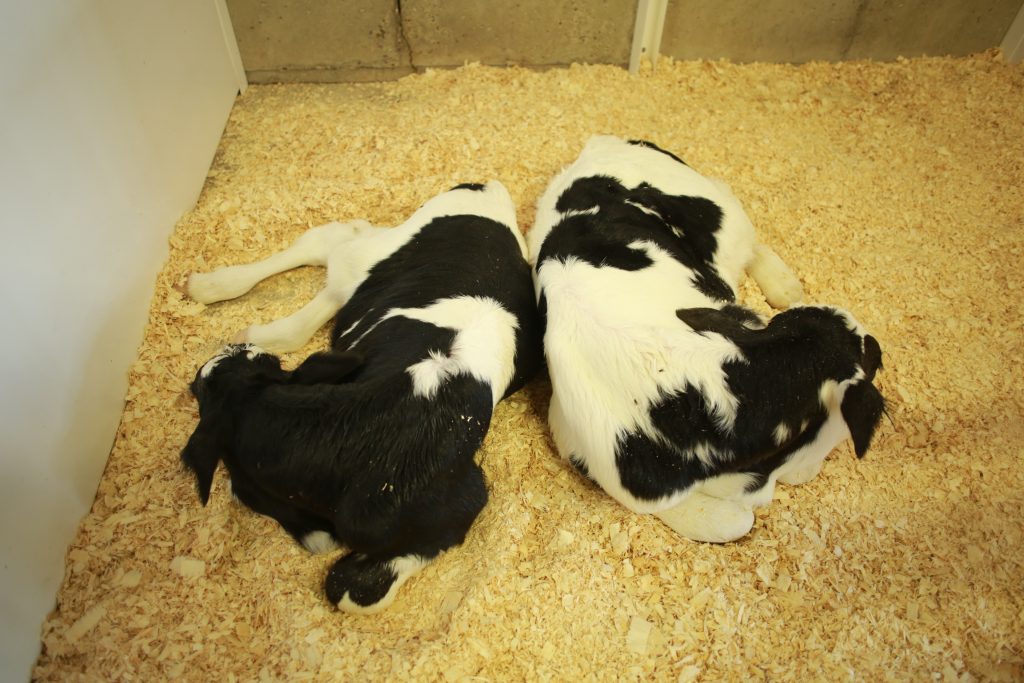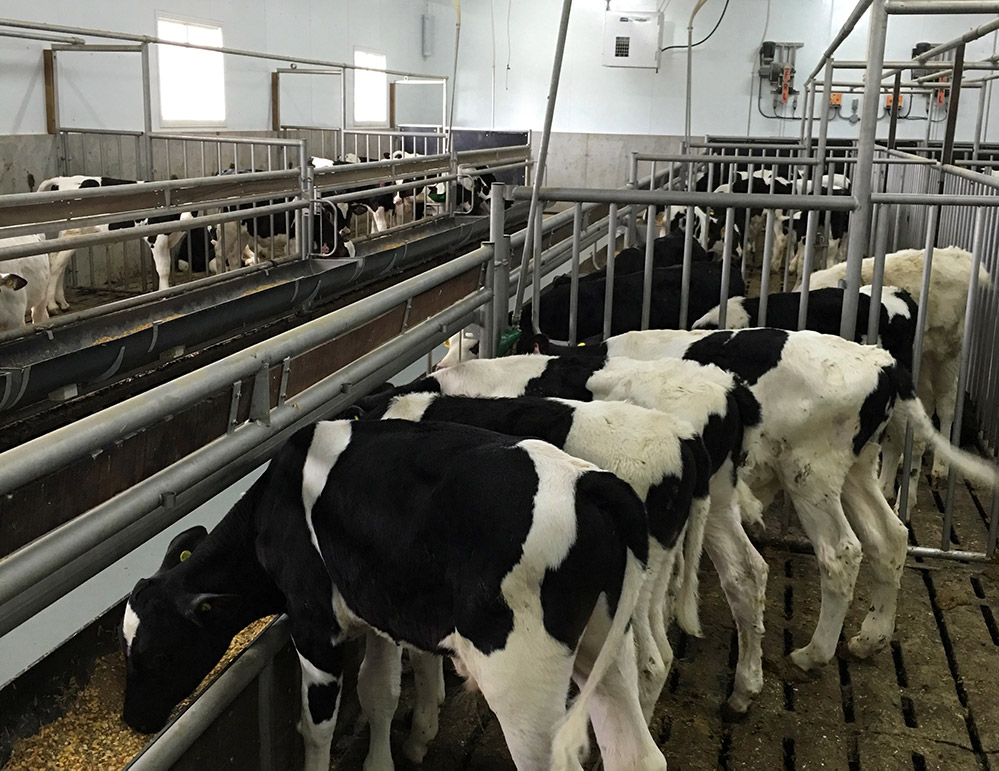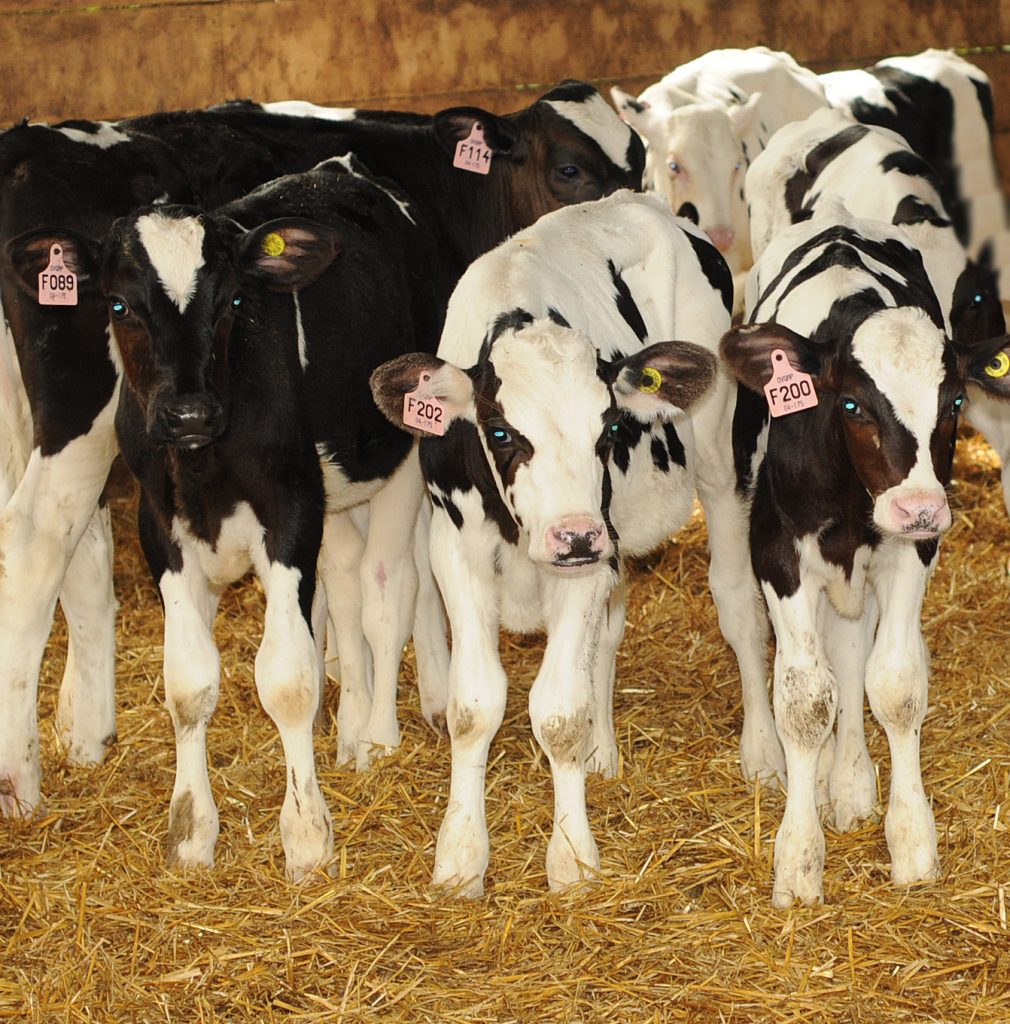Indoor calf housing requirements
Producers starting calves for the veal or dairy-beef market indoors had new requirements in the Code of Practice for the Care and Handling of Veal Cattle (the Code) come into effect December 31, 2020. It is very important to understand if the pens used in your operation comply.
Effective December 31, 2020, in all holdings:
Calves must be housed in groups as young as possible and not later than eight weeks of age. Time in individual housing can only be extended past eight weeks of age in exceptional circumstances for the health and welfare of individual calves on the advice of the herd veterinarian according to the herd health plan.
Transition to group housing methods – New or renovated facilities
Effective July 1, 2018, in all holdings which are newly built, substantially renovated, brought into use, or where existing stalls are modified:
Calves must be housed in groups as young as possible and not later than eight weeks of age. Time in individual housing can only be extended past eight weeks of age in exceptional circumstances for the health and welfare of individual calves on the advice of the herd veterinarian according to the herd health plan.
If individual housing is used in the first eight weeks of age, it must allow calves to turn completely around without assistance, groom, adopt sternal and lateral resting postures, easily stand up and lie down, and have visual and physical contact with other cattle. This can be achieved through stall design, stall size and/or the timing of when calves are grouped.
Tethering – Indoor facilities
Effective July 1, 2018, in facilities that are newly built, substantially renovated, brought into use, or where existing stalls are modified, those facilities must not be designed to permit tethering, and calves in those facilities must not be tethered.
Effective December 31, 2020, tethering of calves is prohibited.
Existing individual stalls that do not allow lateral resting
Existing stalls where calves are housed untethered may be used after July 1, 2018, provided:
- they are in good condition and allow calves to groom, adopt a sternal resting posture, easily stand up and lie down, and have visual contact with other cattle, and
- effective December 31, 2020, calves are grouped as young as possible and not later than eight weeks of age.
Existing stalls that meet the above requirements (for “Existing individual stalls”) and where less than 50 per cent of each of the two side panels is solid (thus permitting physical and visual contact between calves) may be used for the lifetime of the stall.
Effective July 1, 2033, existing stalls where more than 50 per cent of the side panels is solid are prohibited.

When evaluating individual housing indoors, the calf must be able to turn completely around without assistance, groom, adopt sternal and lateral (to lay completely stretched out on their side) resting postures, easily stand up and lie down, and have visual and physical contact with other cattle. They will need to see each other and touch at least one other calf for physical contact for the whole growing period. If the calves are not able to achieve this, then housing is not in compliance.
If producers are not sure if the pens comply, they are strongly encouraged to contact the Veal Farmers of Ontario office for clarification. It is better to be clear on the requirements when making modifications to continue to start calves.
Existing individual stalls that do not allow lateral resting may be used provided they are in good condition and allow calves to groom, adopt a sternal resting posture, easily stand up and lie down, and have visual and physical contact with other cattle. Where less than 50 per cent of each of the two side panels is solid (thus permitting physical and visual contact between calves), they may be used for the lifetime of the stall. Effective July 1, 2033, existing stalls where more than 50 per cent of the side panels is solid are prohibited.
The tethering of calves is no longer permitted after December 31, 2020, regardless if the calves are indoors or outdoors. This requirement was not decided lightly, it is what our customers want and what our meat plants are asking for. Remember, as producers we produce what customers buy and if we do not, we do not sell. It is not the most difficult change, there are producers all over Ontario already not tethering calves. It will take some penning adjustments but is doable.

If farms do not already have a herd health plan, now would be as good of time as ever to get it developed and have all members of the team on the same page. The herd health plan can be a useful tool for disease monitoring year over year, in addition to saving money
Remember, the Code is our industry standard and is in effect for all of Canada. Veal Farmers of Ontario does not have the authority to mandate the Code, however if the Provincial welfare inspector is called to investigate your operation, the standard will be the requirements in the Code. On January 1, 2020, the Provincial Animal Welfare Services (PAWS) Act replaced the Ontario Society for the Prevention of Cruelty to Animals (OSPCA) Act and all investigations are done with Provincial welfare inspectors.
Click here to download a copy of the Code.
